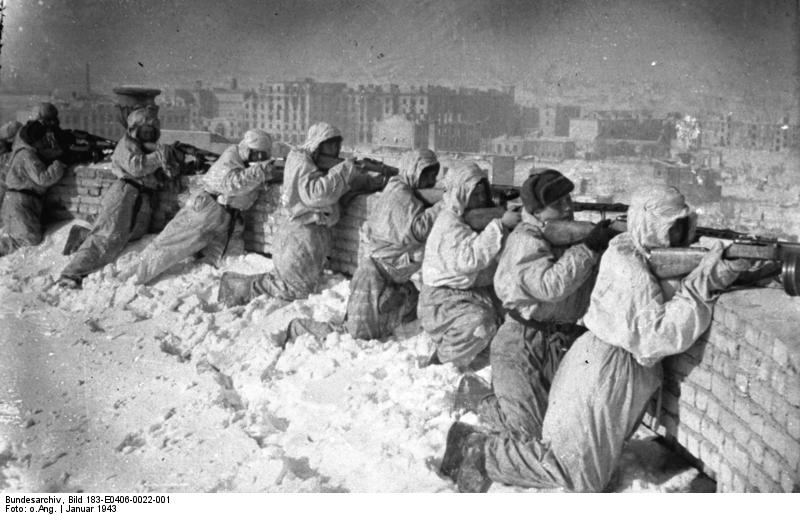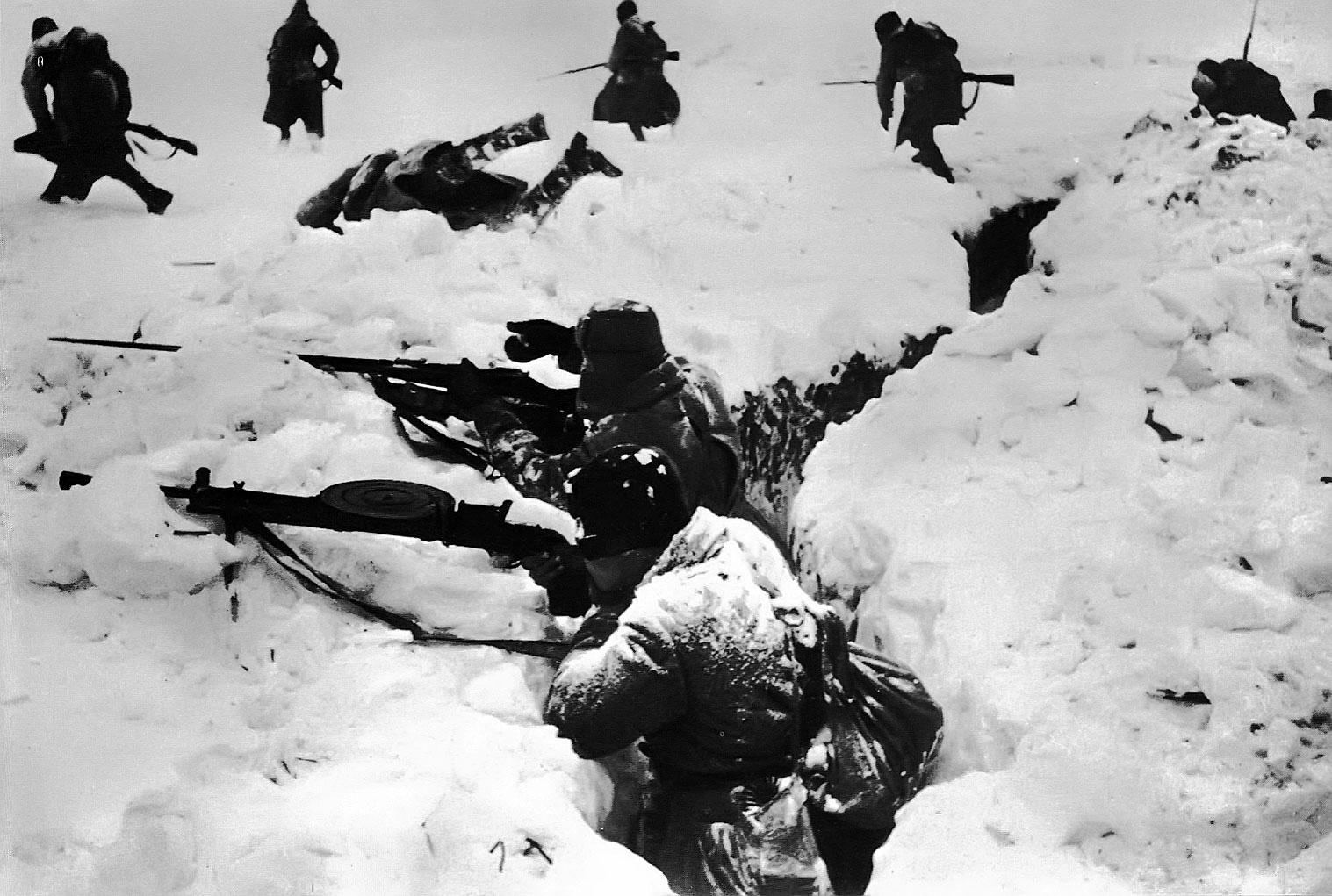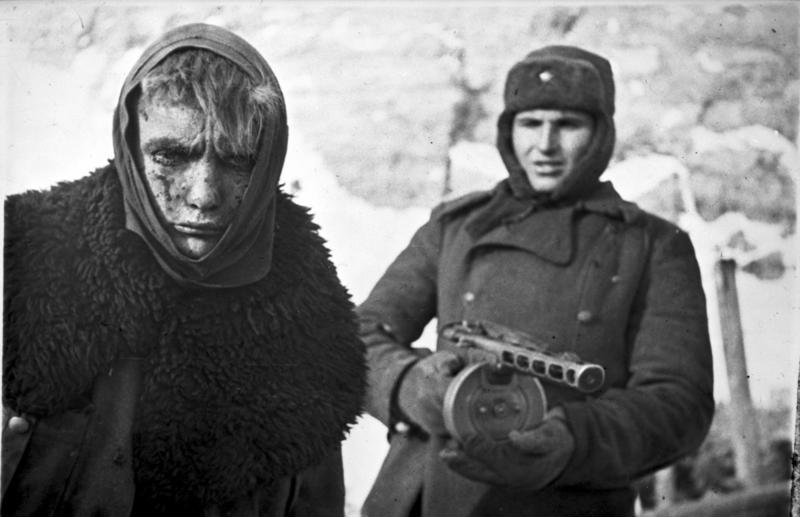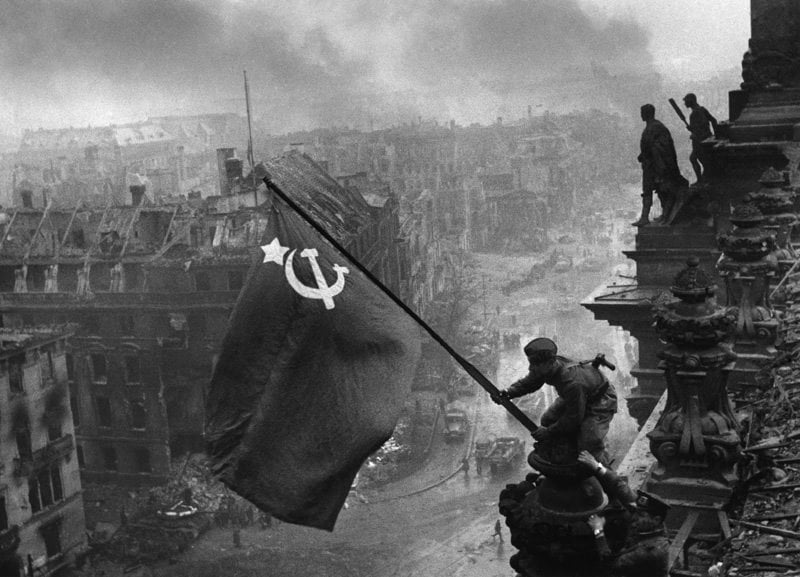The Battle of Stalingrad was one of the most important battles of the Second World War. Fought between 17 July 1942 and 2 February 1943, it is widely regarded as one of the turning points of the entire war. A decisive Soviet victory, Stalingrad marked the beginning of the end for the German invasion of the USSR. This article contains some of the battle of Stalingrad facts that are most important.
The Battle of Stalingrad:
The Battle of Stalingrad is considered by many historians to have been the turning point in World War Two in Europe. The battle at Stalingrad bled the German army dry in Russia and after this defeat, the Germany Army was in full retreat. One of the ironies of the war, is that the German Sixth Army need not have got entangled in Stanlingrad. Army Groups A and B were well on their way to the Caucasus in south-west Russia, when Hitler ordered an attack on Stalingrad. From a strategic point of view it would have been unwise to have left a major city unconquered in your rear as you advanced. However, some historians believe that Hitler ordered the taking of Stalingrad simply because of the name of the city and Hitler’s hatred of Joseph Stalin. For the same reason Stalin ordered that the city had to be saved.
The Battle for Stalingrad was fought during the winter of 1942 to 1943. In September 1942, the German commander of the Sixth Army, General Paulus, assisted by the Fourth Panzer Army, advanced on the city of Stalingrad. His primary task was to secure the oil fields in the Caucasus and to do this, Paulus was ordered by Hitler to take Stalingrad. The Germans final target was to have been Baku.
Stalingrad was also an important target as it was Russia’s centre of communications in the south as well as being a centre for manufacturing.

In early September 1942, the German Army advanced to the city. The Russians, already devastated by the power of Blitzkrieg during Operation Barbarossa, had to make a stand especially as the city was named after the Russian leader, Joseph Stalin. For simple reasons of morale, the Russians could not let this city fall. Likewise, the Russians could not let the Germans get hold of the oil fields in the Caucasus. Stalin’s order was “Not a step backwards”.
Number of soldiers at the Battle of Stalingrad:
Initially, the German military committed 270,000 men, 3,000 artillery pieces 500 tanks and 600 aircraft to the Battle. The Soviet defenders had available 187,000 men, 2,200 artillery pieces, 400 tanks and 300 aircraft.
By the time of the Soviet counter-offensive, the German military had committed 1,011,000 men, 10,250 artillery pieces, 675 tanks and 732 planes. The Soviet Union matched the Germans for manpower, but with shorter supply lines than the Germans, could bring more heavy firepower to bear. The Soviet forces number 1,103,000 men, 15,500 artillery pieces, 1,463 tanks and 1,115 aircraft.

Battle of Stalingrad Casualties:
The exact number of casualties will never be known. However, it is estimated that the German Army lost more than 750,000 men killed, missing or wounded. Archives record that the Soviet Army, by comparison, lost 478,741 men killed or missing, and 650,878 wounded.
To give you an indication of scale, consider that the US Army lost 416,800 men throughout the entire Second World War.
Civilian casualties are less well recorded, and estimates vary between 4,000 and 40,000. The relatively low number of civilian deaths at the battle of Stalingrad compared to the number of military deaths is largely because, as a result of the German air bombardment and the ferocity of the battle Stalingrad was reduced to ruins, and much of the civilian population fled the city.
Prisoners of War:
91,000 German troops were captured at the end of the Battle of Stalingrad. Of those 91,000, only 6,000 survived to return to Germany after the war.
Key Generals:
Georgy Zhukov was the Soviet General responsible for planning the defense of Stalingrad, and the eventual Stalingrad counter-attack that defeated the German assault. His role in the Battle of Stalingrad, and masterminding the Soviet assault on Germany led to his becoming the most decorated Soviet officer in history.

Freidrich Paulus commanded the German Sixth Army that led the assault on Stalingrad. As it became clear that defeat was inevitable, Hitler promoted Paulus to the rank of Field Marshal, on the basis that no German Field Marshal had ever before surrendered. Paulus defied tradition and surrendered. In captivity he became a vocal critic of Germany, returning to East Germany after the war.
Countries involved in the Battle of Stalingrad:
As well as the Germany and the Soviet Union, troops from Romania, Italy, Hungary and Croatia fought in the Battle of Stalingrad, on the side of Germany.
Volgograd:
Today, Stalingrad is known as Volgograd.
How did Hitler’s mistakes affect the outcome of the battle?
Hitler made a number of mistakes that may have cost him the Battle of Stalingrad, which contributed to Germany losing World War 2.
Mistake #1 – Hitler started “Operation Barbarossa” too late in the year. By the time the Nazis were invading Russia the first snow was already falling. Hitler lost many soldiers due to the cold.
Mistake #2 – The German army was unprepared for the Russian winter and many died of frostbite, starvation, typhus and dysentery.
Mistake #3 – Hitler attacked for personal reasons rather than from a strategic standpoint. Hitler believed Russia was part of the “Jewish world-conspiracy” because some of the people who started communism were Jewish. He also hated Joseph Stalin.
Why was this Battle of Stalingrad so important?

The failure of the German Army was nothing short of a disaster. A complete army group was lost at Stalingrad and 91,000 Germans were taken prisoner. With such a massive loss of manpower and equipment, the Germans simply did not have enough manpower to cope with the Russian advance to Germany when it came.
Despite resistance in parts – such as a Kursk – they were in retreat on the Eastern Front from February 1943 on. In his fury, Hitler ordered a day’s national mourning in Germany, not for the men lost at the battle, but for the shame von Paulus had brought on the Wehrmacht and Germany. Paulus was also stripped of his rank to emphasise Hitler’s anger with him. Hitler commented:
“The God of War has gone over to the other side.”
1. Battle of Stalingrad | Battlefield Detectives Documentary on Youtube:
Battlefield Detectives finds out what won and what lost the infamous battle on the Eastern Front.
2. The Battle Of Stalingrad YouTube Video:
What do you think About This Battle ? Share your comments below.
H/T: historyofrussia.org & historylearningsite.co.uk
